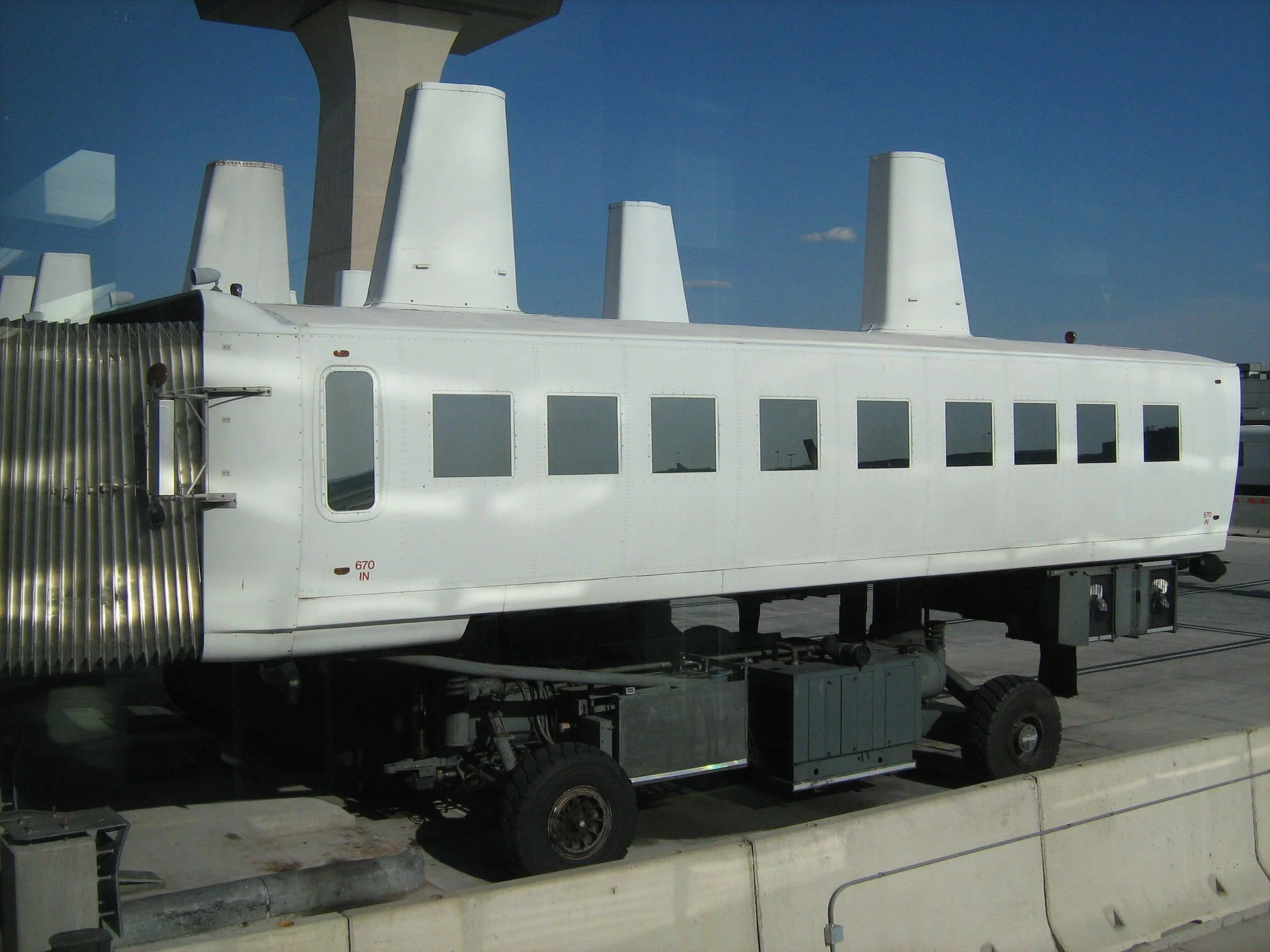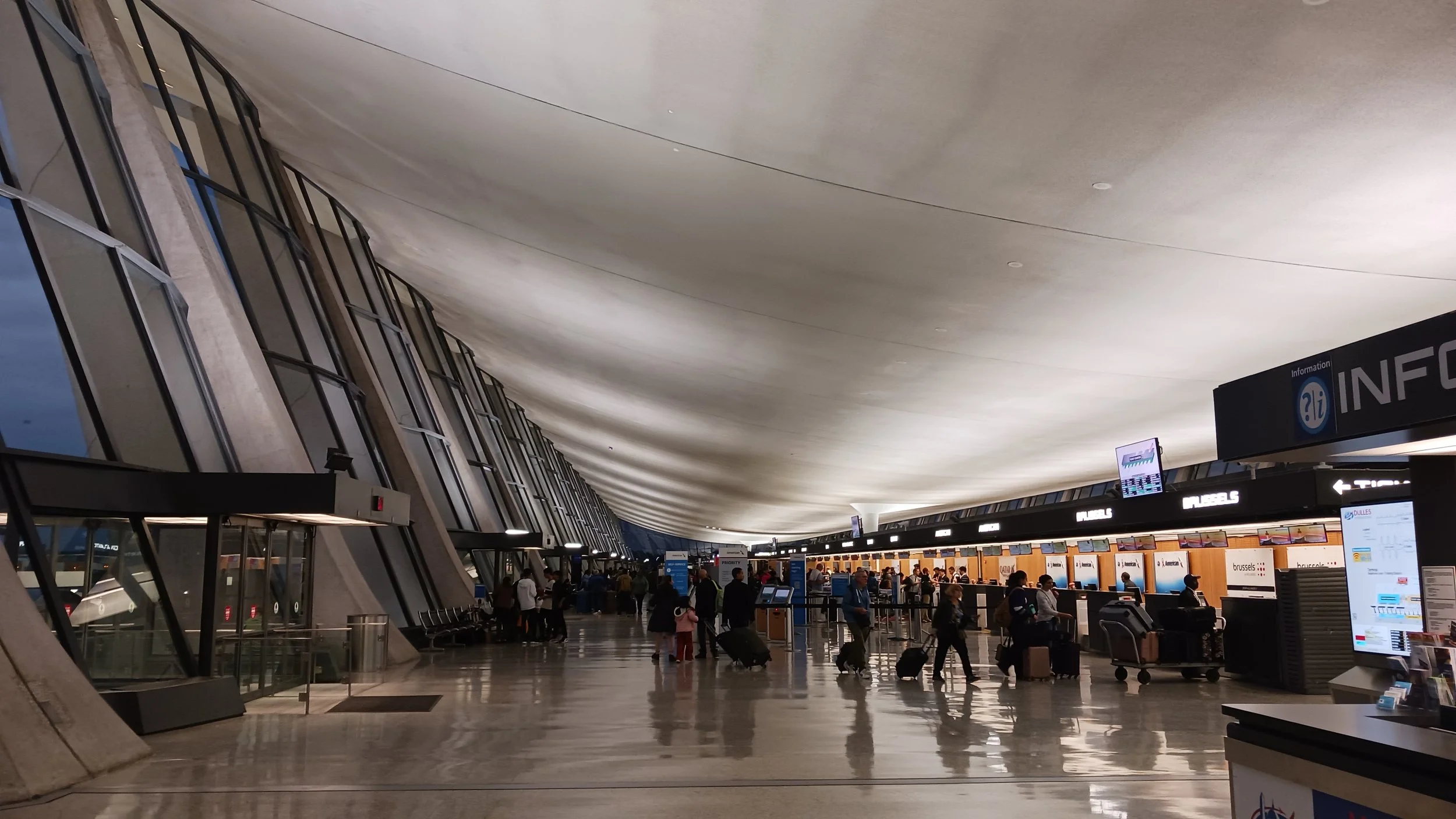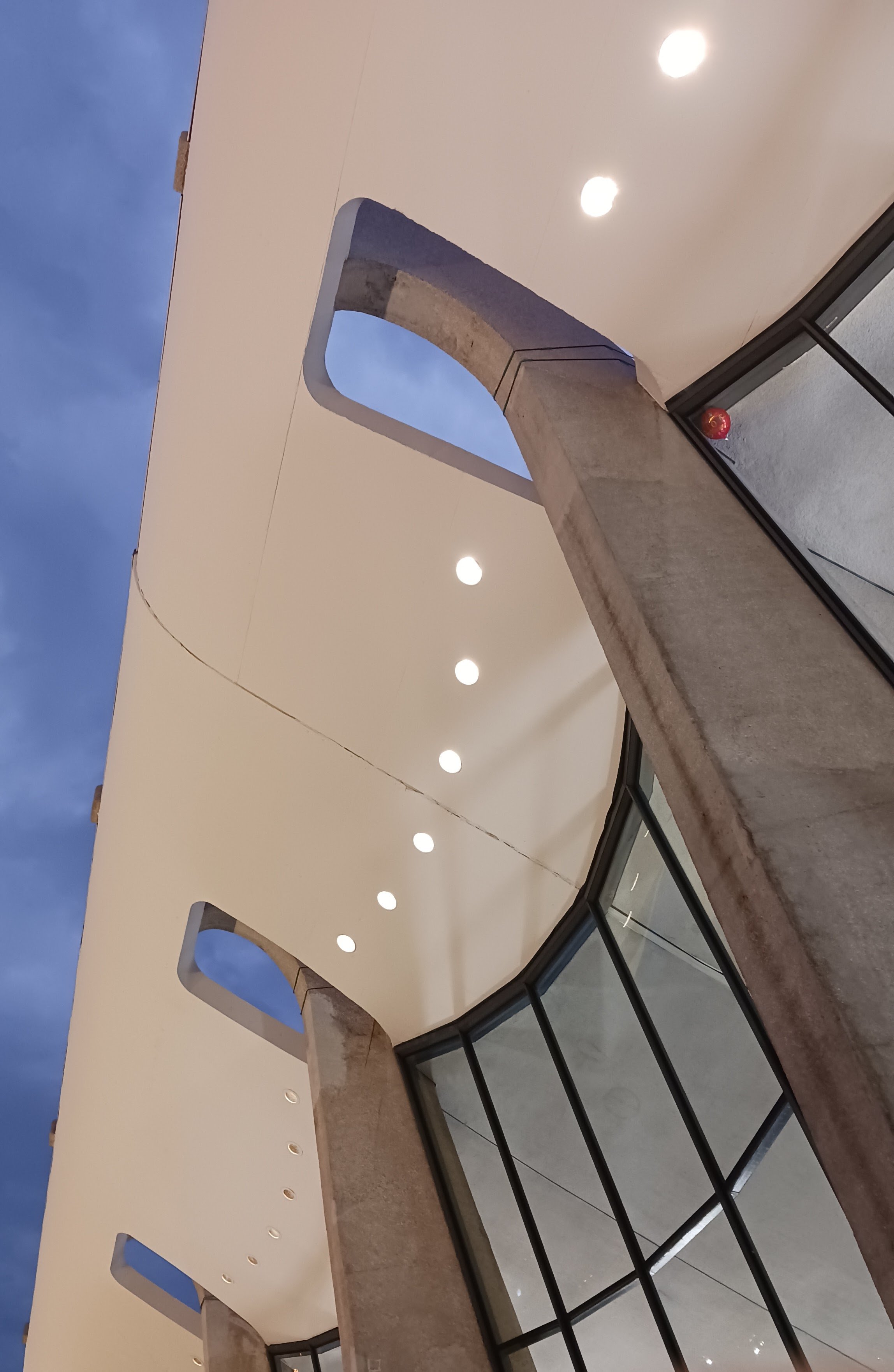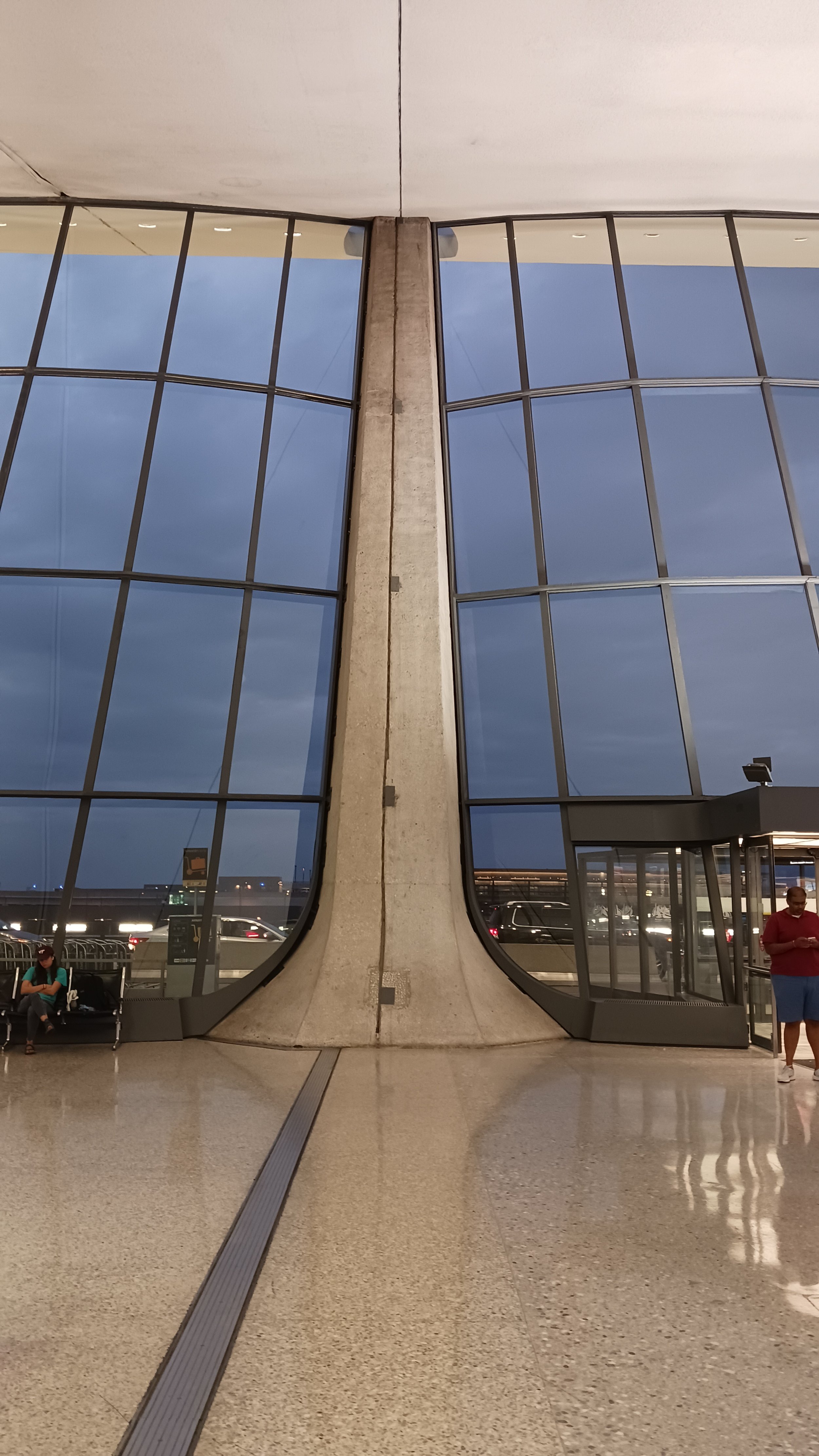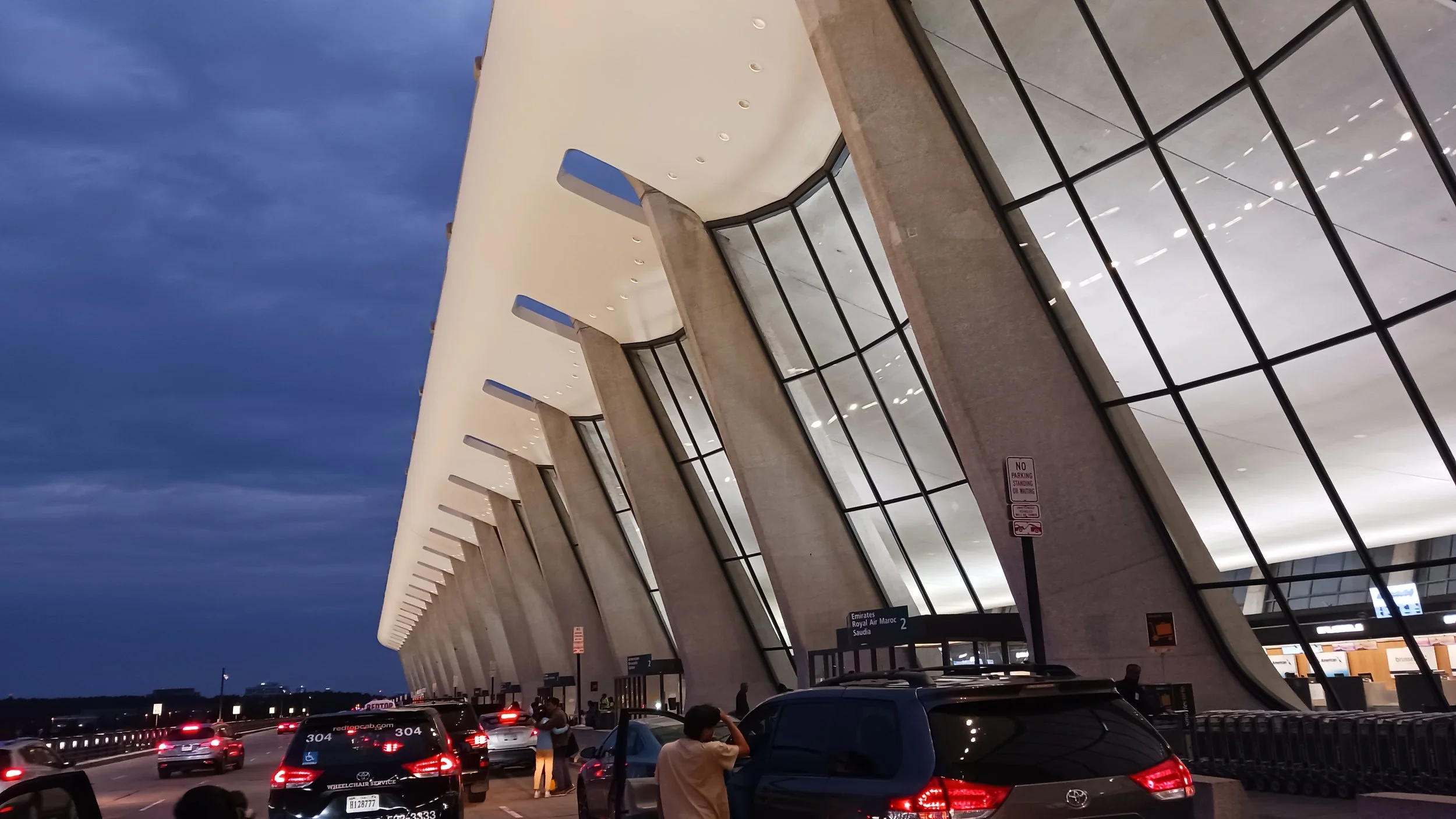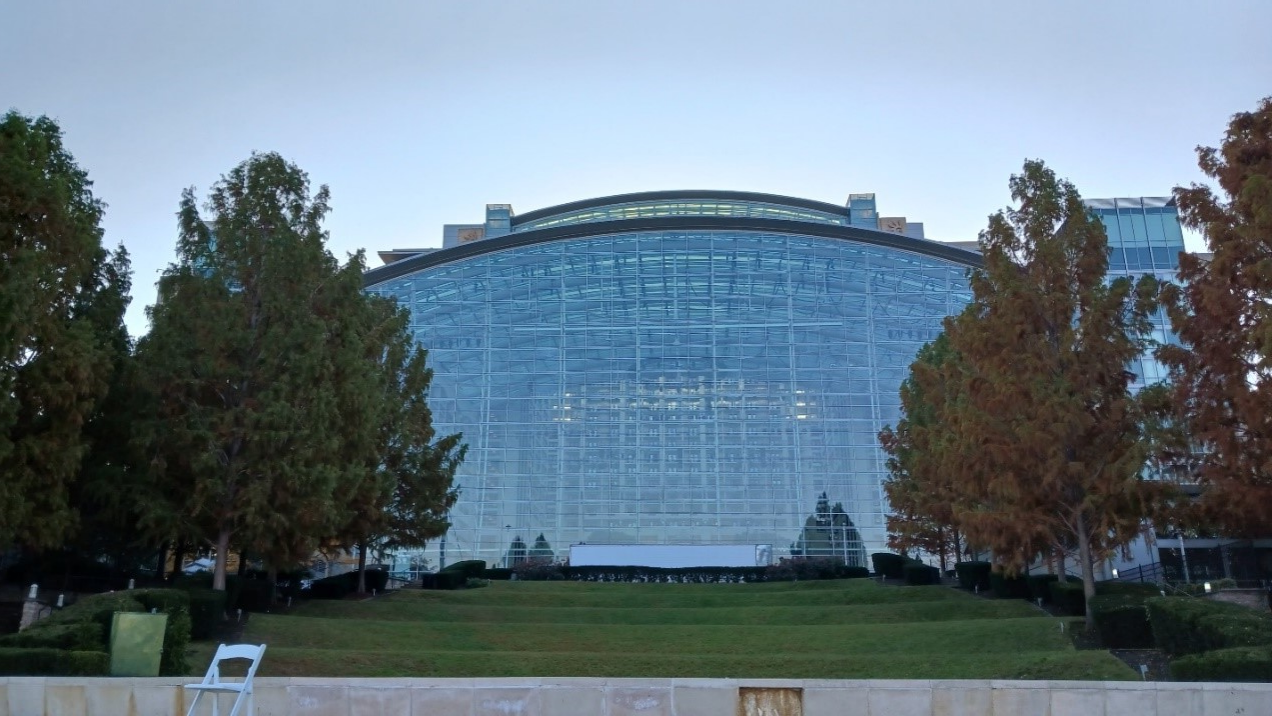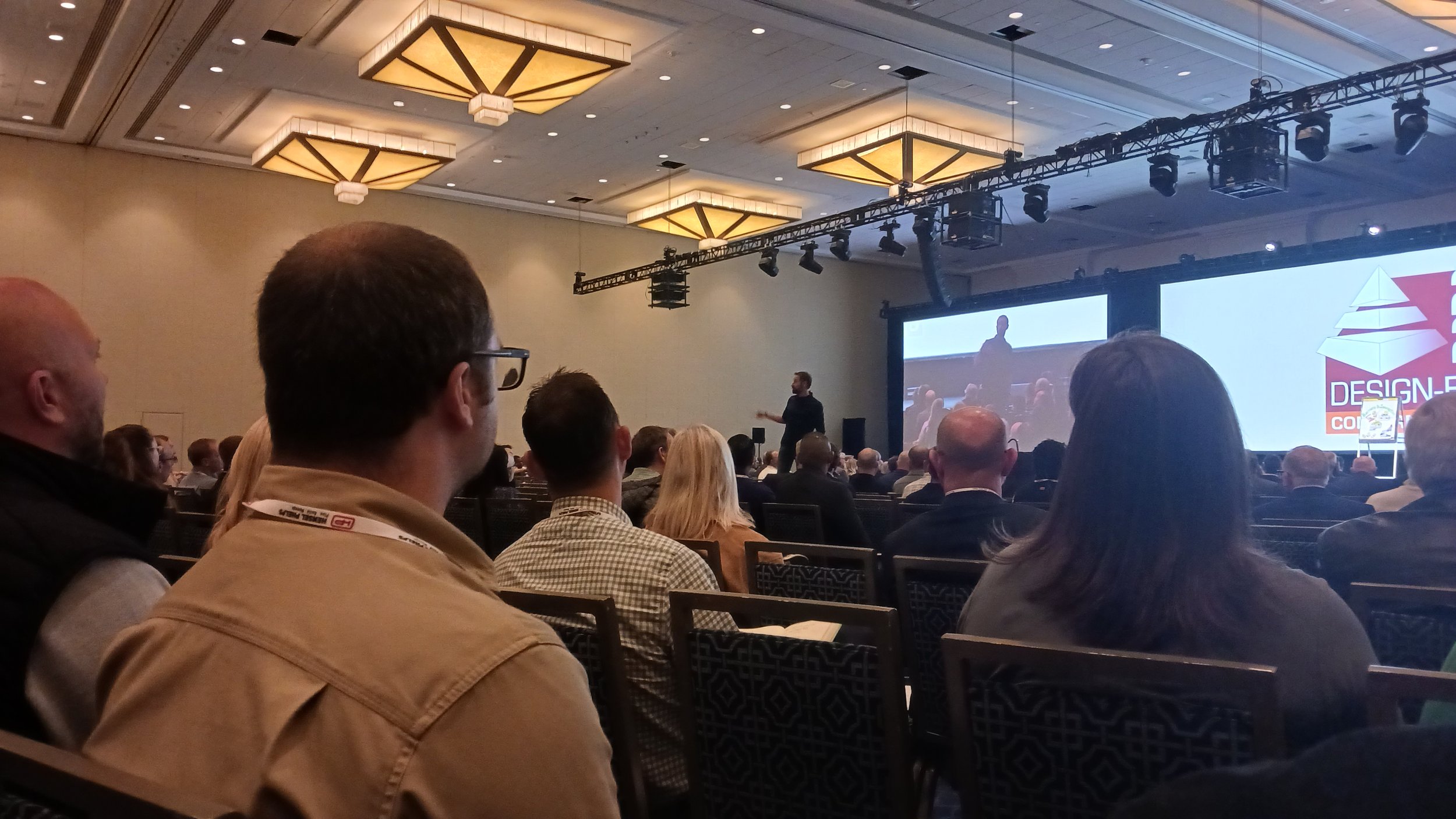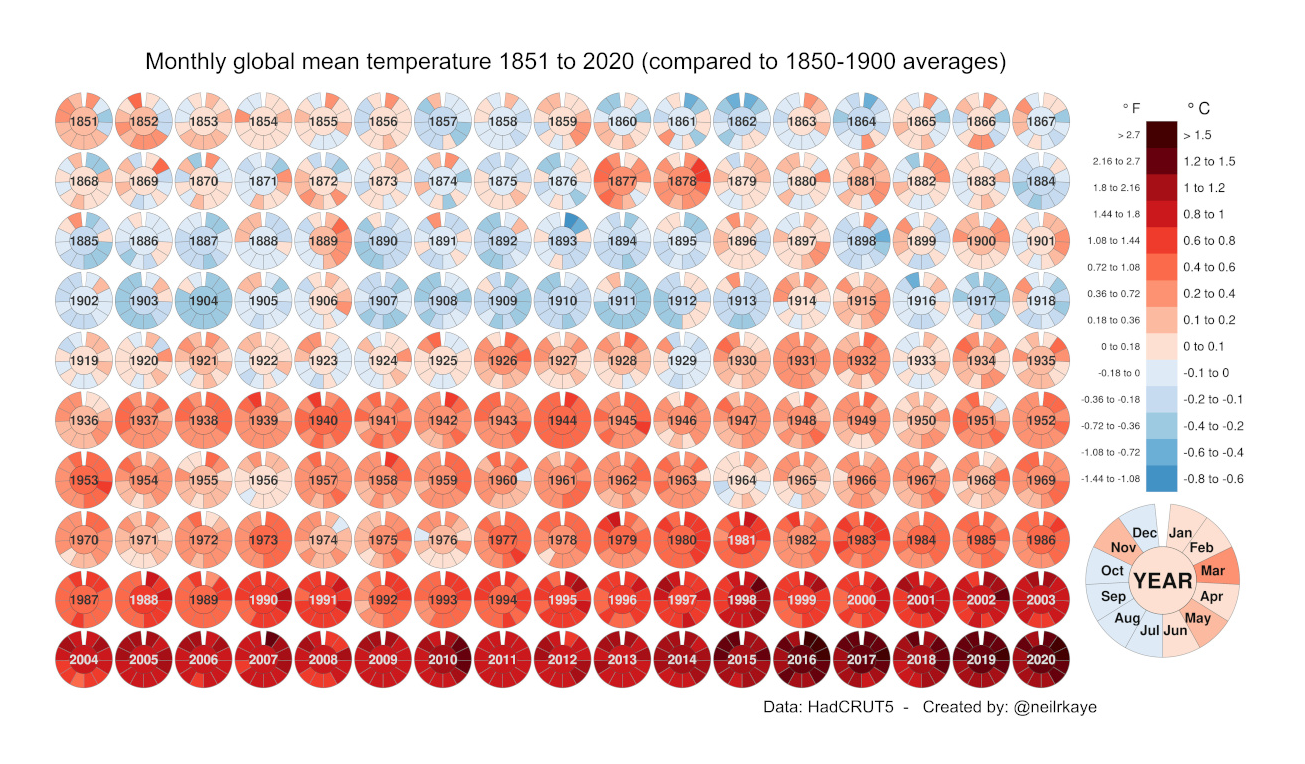DBIA’s 2023 Design-Build Conference & Expo
It all began with a bucket list airport visit. Flying east for the Design-Build Institute of America’s (DBIA) Design-Build Conference & Expo, we had the good fortune to land at Dulles Airport in Washington, D.C. and visit the main terminal designed by Eero Saarinen, which opened in 1962.
Dulles’ expressive form was meant to evoke feelings of flight. At the time, mobile lounges were a unique solution to shuttle passengers directly from the Main Concourse to the planes. The original mobile lounges continue to service Concourse D from both the main terminal and Concourse A, but are being progressively retired in favor of a new AeroTrain system.
In the 1990s, the terminal was reconfigured to move the ticket counters further from the front wall, and additions at both ends more than doubled the building’s length. The sense of grace and beauty from the sweeping roof over the original free-span space fortunately still exists. Dulles has managed to extend the terminal’s life with restrained additions that respect the original design.
After sightseeing and adjusting to the Eastern time zone, it was time to attend sessions at the Design-Build Conference & Expo. The event was hosted by the Gaylord National Resort and Convention Center with views onto the National Harbor and the Potomac River:
Day zero of the three-day event was a preconference session filled with a focus on Virtual Design and Construction (VDC), a re-emphasized focus of DBIA. The VDC sessions explored how VDC is impacting designers, builders, and owners, with a focus on enhancing design excellence, increasing quality and productivity, and improving lifecycle costs.
One session featured a discussion on how robotics and automation are increasing efficiency in Design-Build. The panel consisted of representatives from Dusty Robotics, a startup with a robot that prints layout lines straight out of a 2D file onto the floor; Black Buffalo, a company that sells a 3D printer and materials to extrude layers of concrete for building structures; and Boston Dynamics, whose “Spot” robot can be outfitted to periodically laser/lidar survey job sites to identify construction errors while there is still time to rectify them.
The main conference sessions started with a thoughtful and energetic presentation by Duncan Wardle, the former Head of Innovation and Creativity at Disney. A principle of his “Naïve Experts” theory was about diversity of thought, as he noted, “Diversity is innovation. If someone doesn’t look like you, they don’t think like you, and they help you to think different.”
Day two’s general session addressed safety and well-being in the construction industry, exploring how lifestyle choices and emotional intelligence can create a safer work environment for better mental health. Another session, titled “Build Beautifully: How Design-Build Can Create a More Sustainable Future,” was presented by Molly Jones, President of Jones Design Studio. When working with her federal clients, Jones has been able to combine their sustainability initiatives and requirements with a design-build approach and implement a comprehensive response to climate change. Looking at the numbers documenting global mean temperature between 1851 and 2020, there’s no question that these principles are essential to the future of the industry.
Jones advocated for reducing energy use and carbon footprint in vertical and horizontal construction, showing how design-build uniquely offers increased speed to market, innovation and collaboration, risk mitigation, and cost control. I’m already on the wait list for her upcoming book, Building Beautifully.
Day three included a panel session on how King County created an Equity and Social Justice (ESJ) strategic plan for design and construction projects within a $1.74 billion bond program, including recent projects at Harborview Medical Center in Seattle. The design-build team then crafted and executed a very intentional process to create a diverse team, explaining their approach to ESJ to King County during design and construction. The panelists discussed their various Minority/Women-owned Business Enterprises (MWBE) goals, solicitation and engagement strategies, continuous outreach, tracking and monitoring of their plan, training and accommodations, mentoring, and ultimately how they were able to determine how successful they were in achieving their goals.
DBIA has made a concerted effort in addressing sustainability, diversity and inclusivity in the process. These sessions show that they are indeed taking the steps to walk the walk, all within the culture of trust that serves as a cornerstone of the design-build process.
[Photo Credits: FlyDulles.com, Christopher Ziemnowicz, HKP Architects]


